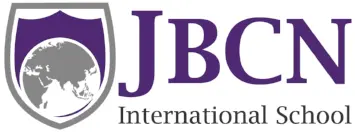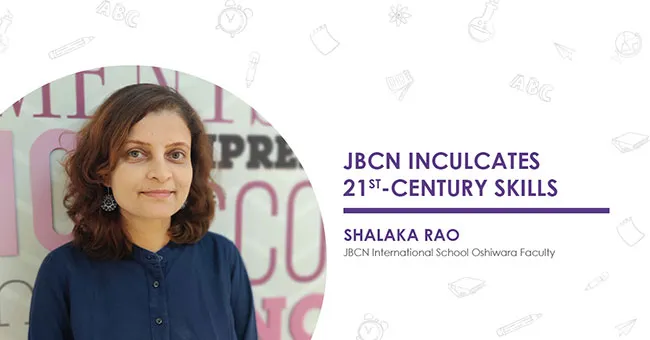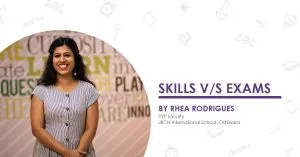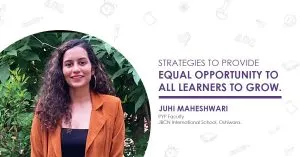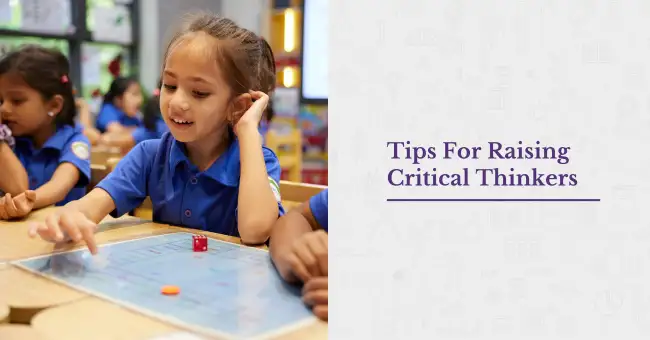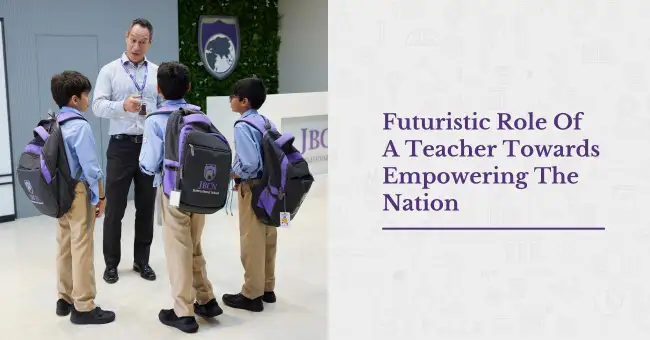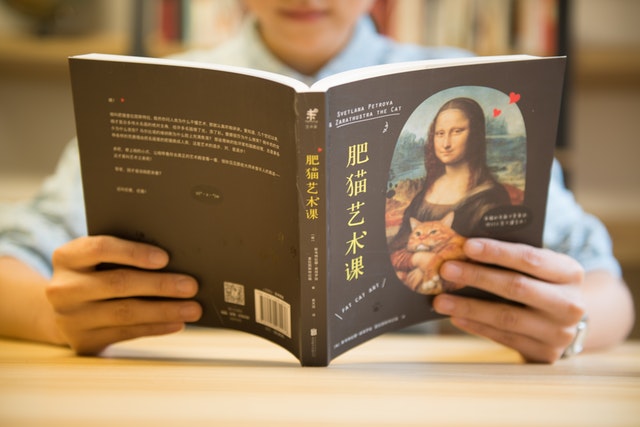
According to research, there are three prominent learning patterns: Kinaesthetic, Visual, and Auditory. Initially children show a balance between the three styles, but gradually they become more inclined towards one pattern that allows them to excel; and which they carry into their adulthood as well. As a parent, it is natural to be anxious to know what your child’s primary learning pattern is in order to help your child study well. Let’s look at the three styles and understand them better:
The Kinaesthetic Style
Kinaesthetic learners use physical methods to grasp or acquire a particular piece of information. They have a strong sense of stability, making them naturally curious learners. They learn by touching, feeling or doing chores and tend to use their fingers to count, make gestures to understand answers and clap in order to learn a song. These learners often have sharp hand-eye coordination and are naturally great at physical activities like sports and dancing.As babies, these learners tend to be very active and generally display early signs of walking. They may not be able to sit in one place and become very fidgety if they have to. Kinaesthetic learners love the idea of clay modelling and would choose craft over drawing or painting. They also love the idea of building blocks, joining puzzles and creating models. Knowing How To Identify Primary Learning Styles In Children will certainly help determine your child's learning style.
The Visual Style
 Visual learning is one of the effective learning styles that have long been followed by ancient scholars and philosophers alike. Visual learners are observers of the world around them and love art. Children who are visual learners like to read books and are inclined to learn using pictures and audio-video mediums. These learners tend to dig deeper when looking at a photograph, painting or illustration and are more attracted to brighter colours and symmetrical patterns. If supervised, they can also be thought using social media.
Visual learning is one of the effective learning styles that have long been followed by ancient scholars and philosophers alike. Visual learners are observers of the world around them and love art. Children who are visual learners like to read books and are inclined to learn using pictures and audio-video mediums. These learners tend to dig deeper when looking at a photograph, painting or illustration and are more attracted to brighter colours and symmetrical patterns. If supervised, they can also be thought using social media.Their love for art and craft makes their imagination very vivid and therefore they enjoy watching movies and videos on computers, televisions and in the cinemas. Watching visuals on a screen makes it easier for such learners to gather, learn and retain any information presented. Visual learners also remember minute details of their childhood which most of us find hard to remember. They have a crisp memory and can easily remember names, people, and places.
The Auditory Style
Auditory learners, as the name suggests, use auditory tools to learn and retain information in the best possible way. Such learners are usually good listeners, like listening to rhymes and recorded stories, and often show aptitude for music - creating a tune or song all by themselves. They tend to understand instructions and directions better when given to them orally than in a written form and enjoy listening to the sound of the rain and recognising animals by their sounds.Auditory learners have a sharp ear – they show tendency to remember difficult dialogues easily and can repeat words or phrases they have heard recently which might be difficult for other children their age. They have a keen interest in learning new languages and are attracted towards the sound of those languages. They tend to make small rhymes to learn an answer better and often read out loud while learning or writing. This is exactly why knowing How To Identify Primary Learning Styles In Children will certainly help determine your child's learning style.
Understanding The Three Learning patterns
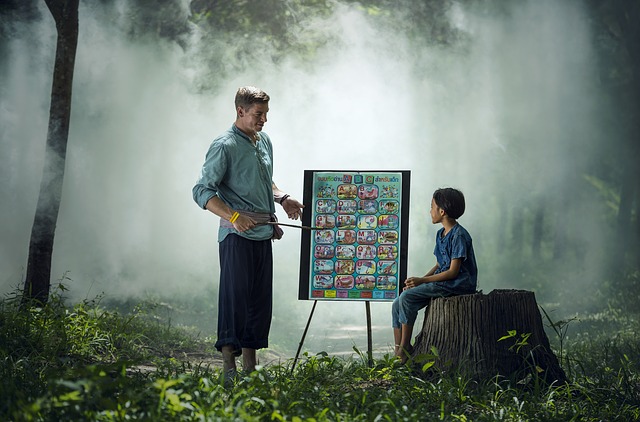 Many educators believe that the learning style of a given child should be a unique mixture of the three and therefore classes should be taught to children as a mixture of all three, effectively giving all children an equally good chance of grasping the lesson and collectively learning as a group. They believe that the content of a lesson should take priority over the style in which it is taught. On the contrary, psychologists believe that lessons learnt by children in their primary learning style help them succeed in their learning. They state that children of a particular learning style develop interests similar to that learning style.
Many educators believe that the learning style of a given child should be a unique mixture of the three and therefore classes should be taught to children as a mixture of all three, effectively giving all children an equally good chance of grasping the lesson and collectively learning as a group. They believe that the content of a lesson should take priority over the style in which it is taught. On the contrary, psychologists believe that lessons learnt by children in their primary learning style help them succeed in their learning. They state that children of a particular learning style develop interests similar to that learning style.As parents, it makes sense to encourage your children to learn in the way that best suits them. This would mean a lot of work from the parents’ side in the initial years when children cannot devise their own study techniques and schedules. However, starting the process early on helps children realise their optimum learning techniques, preparing them for the tougher classes later on. At times, children may not show keen interest towards any particular learning style.
During such times, parents should be supportive, observant and friendly. They should talk to their children about their interests or favourite ways to learn and then devise a study plan accordingly that will generate interest and curiosity in the children. This is exactly why knowing How To Identify Primary Learning Styles In Children will certainly help determine your child's learning style. Some children do not have a definitive learning style for a long time. However, given a few years, they do become inclined towards one of the three primary learning styles… that’s when magic happens. Eventually this helps keep the child organized.
Study Ideas For Each Primary Learning Styles
- Kinaesthetic Learning Kinaesthetic learners like to feel the subject and have a practical experience with it. Therefore, they have a preference for experimenting rather than only reading about a topic. Kinaesthetic learners should be encouraged to trace a diagram using tracing paper or mould the diagram using clay. Using different textured or sizes of papers while writing notes also helps them retain information. Such learners can also role play with each other and dramatize critical concepts to understand better. Using bodily movements and cues will help kinaesthetic learners memorize formulae and definitions.
- Visual Learning Visual Learners tend to follow colours and are better organizers than the rest. Making colour-coded organisers or a set of flow charts and diagrams in different colours helps to grab their attention. Teaching with the help of maps, worksheets, charts, smart boards or projectors also helps such learners to stay interested in the subject matter and retain information well. Such learners should also be encouraged to use different coloured pens and highlighters while taking notes in order to stay organised. Parents can use cartoons or movie characters while teaching visual learners tough concepts.
- Auditory Learning
Auditory learners prefer to transfer the information they read into audio form. So, they should be encouraged to either read out loud and record themselves, or ask someone else to read the information to them. They can then go back and listen to any recordings later while doing revisions. Auditory learners prefer giving answers orally and must be allowed to do so while revising or summarising chapters. Parents can build help interest in a subject by simply talking about it to their children.
Using fun rhymes, tunes or songs for understanding concepts also makes learning easier and more enjoyable for such students. They can also use conversational technologies such as Sir, Google Assistant, etc. to hear the answers to questions about any topic they don't understand.
It’s important to recognise learning patterns early and mould studies according to the pattern for children. As a parent you must know How To Identify Primary Learning Styles In Children. You can consult teachers or counsellors to identify your child’s primary learning style and also for ideas on how to teach them certain topics.
